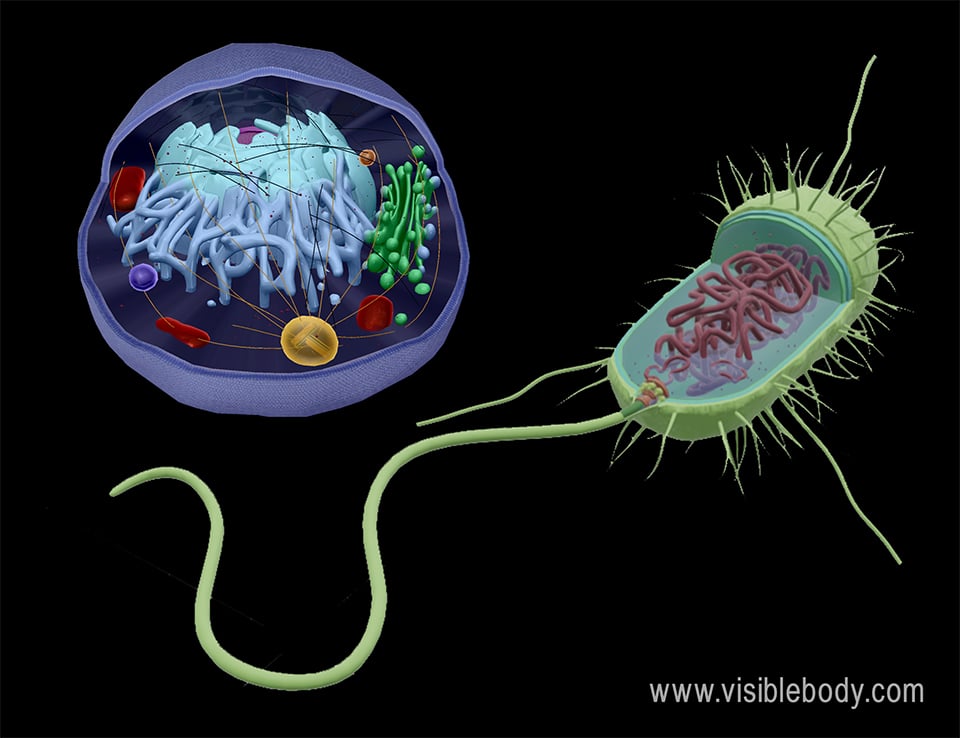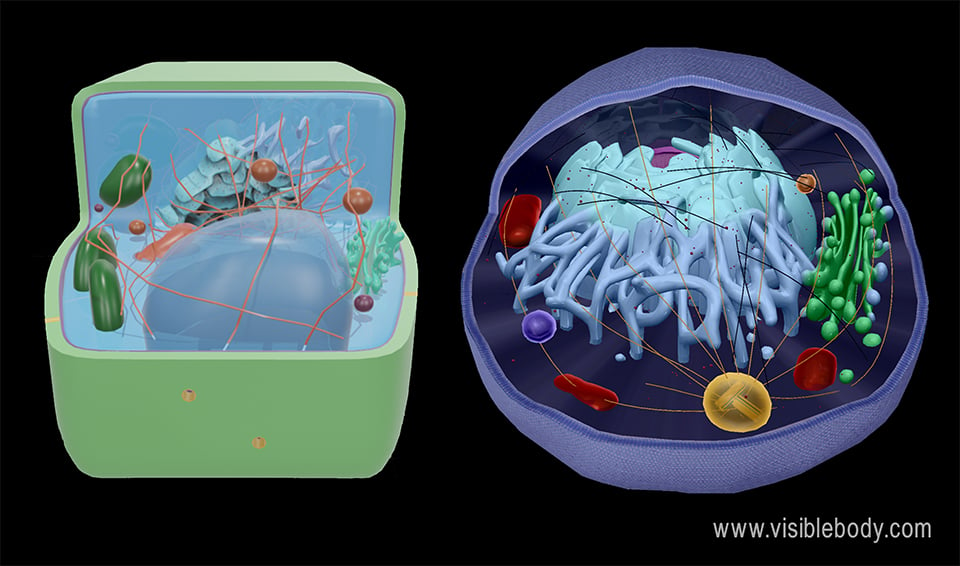
Prokaryotic cells comprise bacteria and archaea. They typically have a diameter of 0.1–5 μm, and their DNA is not contained within a nucleus. Instead, their DNA is circular and can be found in a region called the nucleoid, which floats in the cytoplasm. Prokaryotes are organisms that consist of a single prokaryotic cell.
Eukaryotic cells are found in plants, animals, fungi, and protists. They range from 10–100 μm in diameter, and their DNA is contained within a membrane-bound nucleus. Eukaryotes are organisms containing eukaryotic cells.
|
Prokaryotic Cells |
Eukaryotic Cells |
|
|
Nucleus? |
No |
Yes |
|
DNA arrangement |
Circular |
Linear |
|
Size (diameter) |
0.1–5 μm |
10–100 μm |
|
Unicellular? |
Always |
Sometimes |
|
Multicellular? |
Never |
Usually |
A comparison of plant and animal cells shows that even though eukaryotic cells have membrane-bound nuclei and organelles that carry out many similar functions, they are not all the same.

For example, while animal cells use glucose from the animal’s food to carry out cellular respiration, plant cells are specialized to make their own glucose using photosynthesis. The plant cell’s chloroplasts are key to this process of using light to create food.
Animal and plant cells are both supported by a cytoskeleton and plasma membrane. In addition to these structures, plant cells have a supportive cell wall, which is not present in animal cells. Plant cells also have a large central vacuole that supports them. Both plants and animal cells use numerous small vesicles to contain waste, transport materials, and perform many other functions.
A review of prokaryotic and eukaryotic cells from Khan Academy.
When you select "Subscribe" you will start receiving our email newsletter. Use the links at the bottom of any email to manage the type of emails you receive or to unsubscribe. See our privacy policy for additional details.